11 Essential Questions For Better Blog Clarity
Do you have some questions regarding how to be a blogger — professionally?
Well then I’ve got great news!
Welcome to my 6-part series “Blogging Secrets Revealed,” where I’ll be sharing insider knowledge for those wondering how to get into professional blogging.
In the next few weeks, you’ll come to understand how to start your own travel (or non-travel) blog and turn it into an income-generating business.
Every Thursday for the next six weeks I’ll be sharing:
- 11 Essential Questions For Better Blog Clarity (this post)
- 7 Ways To Find Out Who Your Readers Are
- 10 Simple Tactics For Gaining Blog Traffic
- 18 Awesome Ways To Engage Your Blog Readers
- 19 Essential Tools To Grow Your Blog Business
- Your Ultimate Guide To Blog Monetization
Now, I’ve been a professional blogging coach for many years. And one issue many of my beginner students have is understanding what to actually blog about.
They know they want to blog, and they may even have a general topic idea like travel, fashion or food; but what they don’t have is blog clarity.
And without blog clarity, you won’t get very far.
For this reason it’s important to sit down — with a pen and paper — and ask yourself the following questions.
Do this before deciding on your blog name or niche.
This way, you’ll have all the pieces in place before getting setup (for success, of course!).
Tip: Want to know how to *seriously* turn your travel blog into a profitable business? Click here to sign up for my FREE 5-day email course and learn fresh blog monetization strategies.
Profitable Travel Blogging [Video]
But first…enjoy learning through video?
In the recording above, I share my simple step-by-step strategy for turning your blog into a profitable business.
Once you’ve watched, continue reading the post to learn the important questions you should be asking yourself to gain true blogging clarity and avoid creative block as a blogger.
1. What is your main goal with starting a blog?
Yes, of course you want to make money. But what else? Everything you do for your blog — aka your business — should be done with intention as to not waste your own time (or anyone else’s). Also keep in mind that for serious bloggers, their websites essentially become their lives. Make sure you have a fulfilling reason for starting yours.
Tip: Another way to ask this question is “What is my mission?” What is the one overarching goal you hope to achieve through every piece of content you write?
Examples:
- Migrationology. Helps readers travel through food.
- The Culture-Ist. Helps readers travel and live in a more conscious way.
- Vegans, Baby. Helps readers explore Las Vegas while staying vegan.
2. What questions for advice do people come to me for?
For those of you wondering how to be a blogger, but who aren’t sure of what to actually blog about, asking yourself this can reveal the answer. Your goal with your blog is to become an authority in your niche. Thinking about what topic(s) people already see you as an authority on can help give you a solid foundation.
Tip: The more you understand how to niche down, the easier time you’ll have being seen as an expert. For example, saying you’re an expert in “travel” is very broad. You’ll have a lot of competition, not to mention there’s no way you’d be able to be an expert in all areas of travel. Instead, it’s smarter to blog about “fly fishing travel” or “surf travel” to really gain the loyal following of a focused community.
Another important benefit to becoming an expert in your niche is it makes it easier for you to create a related product or service down the line. If people see you as an expert on, say, travel photography and you write an e-book or create an e-course on it, you’re much more likely to make sales.
Examples:
- Fluent in 3 Months. Hacks for language learning.
- Bare Feet with Mickela Mallozzi. Travel and dance.
- The Points Guy. Luxury travel through miles and points.
3. What are 3-5 values your blog won’t stray from?
These don’t all have to be super deep, like you value world peace (though I hope you do value world peace!). Think about the promises you’ll be making to your readers, like always having high-resolution photography, only working with responsible tourism operators and writing in a humorous voice. It can be helpful to consider:
- What pain points you solve / what ways you inspire your audience
- The tone you’ll use
- How you plan to enrich your readers’ lives
- The topics you’ll cover
Tip: It’s also helpful to write down your anti-values. For example, let’s look at the above-mentioned example of only working with responsible tourism operators. This means that if an elephant trekking company offers you $5,000 for a sponsored campaign, it’s vital you say no.
Examples (from Jessie on a Journey):
- Solo female travel. I aim to show people — especially women — that they absolutely can travel solo. Read: The Unofficial Official Solo Female Travel Manifesto.
- Honesty. I aim to show people the truth about travel, even if it means telling an embarrassing story or admitting to a faux pas. Read: My Epic Travel Research Fail In Croatia (And What You Can Learn From It).
- Responsible tourism. I aim to show people how to travel responsibly, outing irresponsible experiences and giving advice on how to travel more ethically. Read: A Disappointing Spice Farm Day Trip In Goa (And What To Do Instead).
- Beyond The Guidebook. I aim to show people how to go beyond the typical in a destination. Read: France Fun: Exploring Nice Beyond The Promenade.
4. What are three words you want people to associate with your blog’s brand?
This question takes your values one step further. If someone is visiting your site for the first time, what’s the impression you want to make right away?
Tip: Add your blogger personality into the equation. Are you all about elegance? Is your tone snarky? These elements will also play a part in how the reader views your blog.
Examples (from Jessie on a Journey):
- Female empowerment
- Offbeat
- Local
5. What are 3-5 other blogs in my niche you enjoy?
I’m very much of the mindset that a collaborative approach reaps better results than a competitive approach in blogging; however, in this instance it’s smart to survey the competition. Now you don’t want to copy anyone. Instead, look to get inspired. What you’ll really be looking for is what you like, what you don’t like and what you can do better/different from what’s already out there.
Tip: Take this one step further by creating a pro/con list of these blogs. Remember, design counts too! Are you turned off by dark colors? Hate homepages with sidebars? Do you notice what poor navigation looks like? Write it down.
Examples: Will vary by niche. A simple Google search can let you know who else is in your space. You can also search Alltop.com.
6. What’s one gap in your niche?
Use your research from Question #5. Once you determine what it is, think about how you can fill it. Maybe you notice bloggers talking about how to travel on less than $50 per day, but none for the more extreme $25. Or maybe you see tons of yoga blogs, but none targeted at senior citizens who want to do more than Chair Pose. Use this as an opportunity to really shine.
Tip: Coming up with a series or column on your blog that delivers the kind of content missing in your niche can help keep you focused. Using the above-mentioned “traveling for under $25 per day,” maybe you interview a different hardcore budget traveler each week to pick their brain. Or maybe you highlight people over 65 doing extreme yoga challenges. Feel free to get creative! Remember, every blog post you write should have a clear takeaway that keeps your reader in mind.
Series Examples:
- “Breakfast” by Roads & Kingdoms. Everyone talks about travel and food, but through this column they take you on immersive breakfast journeys around the world.
- “Earning Abroad” by Alex in Wanderland. She hasn’t updated this column in a while, but I think it’s a great example of showing a variety of creative ways travel-lovers can hit the road and make money.
- offMetro’s entire site. As a New Yorker, I think they’ve filled a gap for the majority of us without cars. The blog’s drop-down menu has regularly updated columns like “New York Day Trips” or “New York By Bike.” Each column comes together to create their cohesive brand.

7. Within my niche, what are three sub-topics I’ll cover?
This question will help you further plan out your content. Okay, so your niche is extreme budget travel. Through what lenses will you tell these stories? Understanding this will help keep your content focused. You can use these sub-topics as items in your navigation menu. This will help readers easily to click to what they’re looking for.
Tip: Also consider your medium. Blogging is about more than just text. In fact, all your blog posts should at least have beautiful images to go with what you’re saying. And if you can take your own images, even better. Also consider infographics, video and podcasts. By the way, Canva.com is a great tool for crafting beautiful graphics, even if you don’t have design experience.
Examples (Using “extreme budget travel” as the niche):
- How to explore typically pricey destinations for cheap
- Where to travel for less than $25 per day
- Quality travel gear for a fraction of the cost
8. What will my blog be called?
Now that you have a clearer idea of what the site will actually be about, let’s talk about names. Adventurous Kate wrote an amazing post on how to choose a name for your travel blog. It’s an older post, but still makes many valid points. You may also want to take the values and associative words mentioned above in your answers to questions #3 and #4 and weave them in.
Tip: Also consider longevity. Okay, so you want to blog about your year teaching English in Thailand or your summer picking olives in Spain. Having the name revolve around these timed activities usually won’t work, because once the projects finish your content will change.
Examples:
- Jessie on a Journey and Epicure & Culture. I chose to have two blogs so I could have a personal brand about my adventures, and a more magazine-style site. Warning: I recommend getting one blog off the ground before taking on two (a lot of work!).
- Medellin Living. Destination-based travel blog that’s allowed David Lee to become an expert in a smaller niche. Keep in mind, this is better suited for expats and bloggers writing about one place than vagabonds constantly roaming the globe.
- Bohemian Trails. The name really emulates Megan’s love of travel and her bohemian lifestyle.
9. What will my site’s tagline be?
Having a visible tagline on your blog is a great way to immediately let readers know what they’re in store for. And even if you don’t have yours visible, it can help you keep your blog’s mission focused for yourself.
Tip: While ideally your tagline will be short, it’s more important that it conveys one strong idea and does it in a clear way. For example, “A better you” is very overused and vague. How are you helping people be a better version of themselves?
Examples:
- “Taking you beyond the guidebook”. Jessie on a Journey’s tagline lets you know you’ll find content that goes beyond the norm.
- “Travel Better. Cheaper. Longer.” Nomadic Matt‘s tagline makes it clear you’ll learn about traveling long-term on a budget.
- “A normal girl living her biggest, messiest dreams.” Young Adventuress blogs a lot about mishaps and stumbles, so you know right away you’ll get a very honest element.
10. What colors convey my brand values?
Make sure to consider color theory. The colors you choose aren’t just about the blog being “pretty”; but also on brand. Remember, colors convey an idea, and should make your readers feel something in relation to your mission. For instance, while red conveys power and confidence, green typically symbolizes nature.
Tip: Here are some ideas, or you can create your own here. I recommend choosing 2 main colors, then 1-3 accent colors.
Examples:
- Hippie in Heels. A calming blue for a blog about yoga travel.
- The Blonde Abroad. The Barbie aesthetics and pink give a very “girls just wanna have fun” vibe.
- Expert Vagabond. The black and orange give a very masculine, rugged vibe, which goes well with Matt’s extreme hunger for adventure.
11. What fonts convey my brand values?
Along with colors, fonts tell the story of your brand. The fonts you choose make the reader feel — even think — something. Yes, your words say something, but the fonts you choose can drive that message home (or dilute it).
Tip: Choose 1-3, including a font for headings, subheadings and blog post text (sometimes you might use the same font for all). This is a great guide for choosing font pairings, though note depending what blog theme you use not all will be available (though there will likely be a similar option).
Examples:
- Melyssa Griffin. Melyssa teaches classes on Pinterest and business. She has a great way of teaching in a very clear, simple manner, which is the feeling you get right away on her website.
- Dean Street Society. The immediate feel is whimsical and elegant, which makes sense as creator Hilary Rushford is also a stylist and loves creating beautiful things.
- Travel + Leisure. Offers a very “lifestyle” feel.
We’ll be getting more in-depth with a lot of this in the coming weeks. For now, flesh out your answers to these questions as much as you can. Your goal is to have a solid understanding of what you’ll be blogging about and why.
Further Exploration:
I highly recommend opting in for my free library of blogging funsheets, checklists and Mad Libs. These worksheets help you gain clarity in many blogging arenas, like branding, crafting a social media strategy and optimizing your blog posts to gain traffic.
One thing we didn’t cover this week is audience. We’ll be getting very in-depth with that next week, so stay tuned!
Questions about this article on how to be a blogger and gain blog clarity? Ask away in the comments below!

Hi, I’m Jessie on a journey!
I'm a conscious solo traveler on a mission to take you beyond the guidebook to inspire you to live your best life through travel. Come join me!
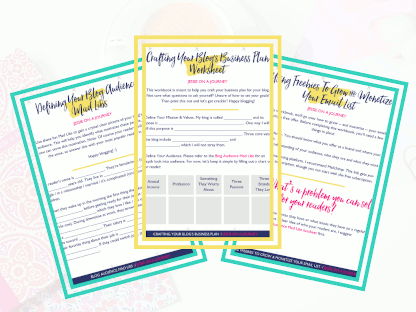
Want to live your best life through travel?
Subscribe for FREE access to my library of fun blogging worksheets and learn how to get paid to travel more!

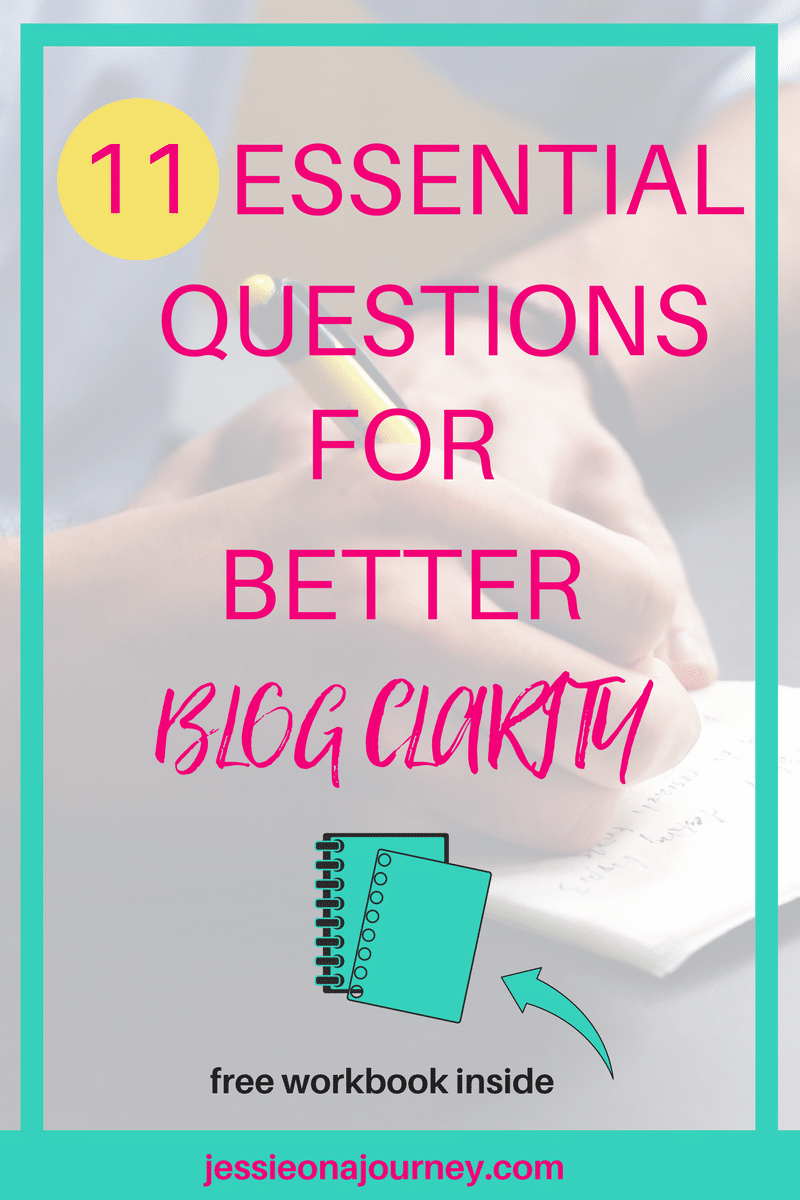
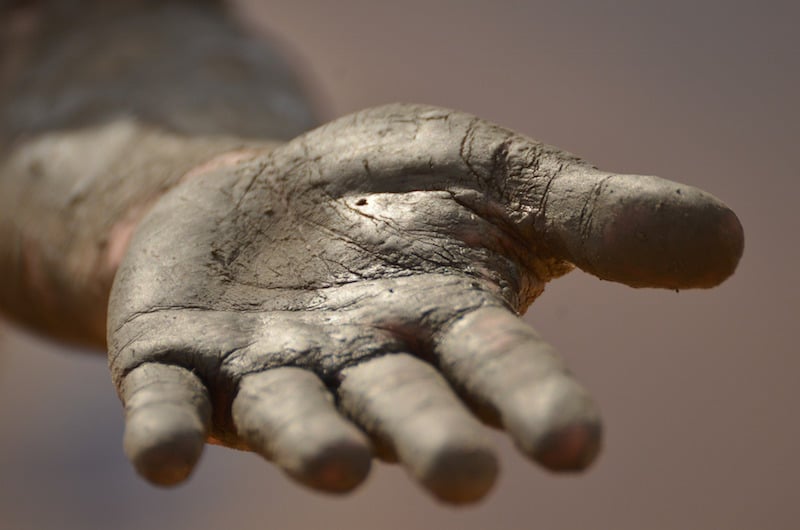

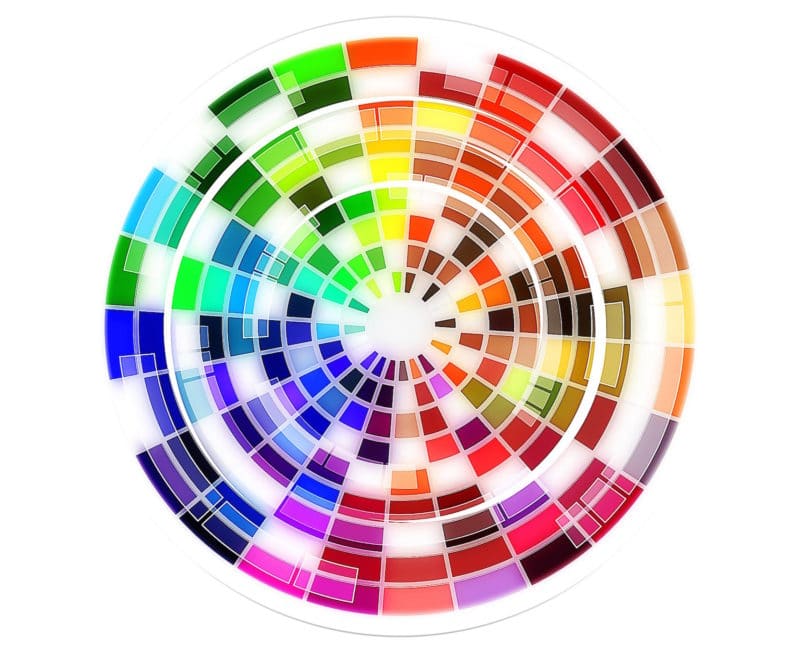
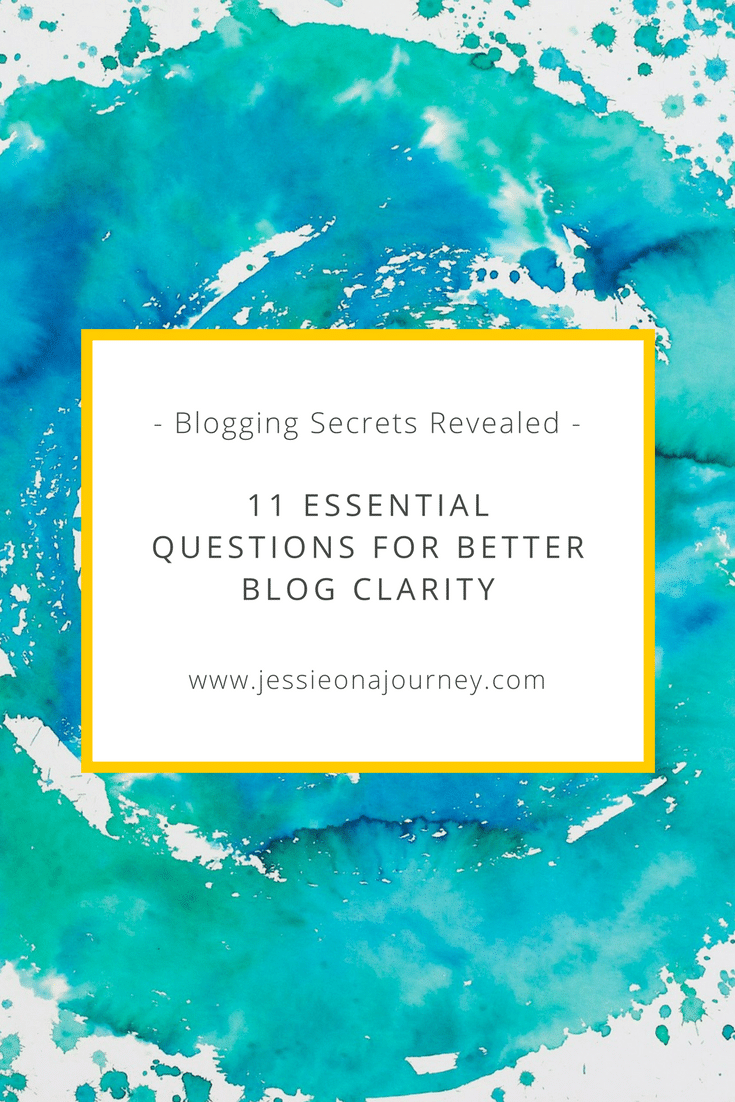

This post got me thinking about my primary goal, but more niche. It also made me realize I am not looking at the gaps properly in my industry – there must be a lot.